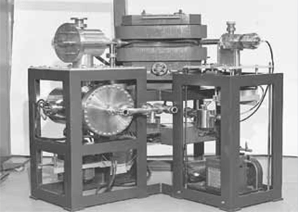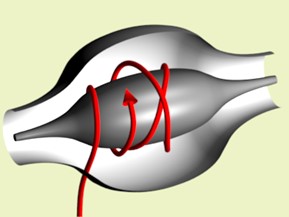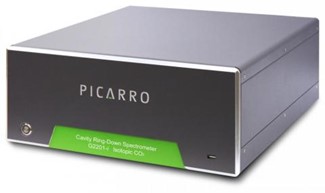In my last blog post I talked about what had changed in isotope ratio MS during my time away from the isotope ratio MS community. In this post I discuss my thoughts about what might happen in the near future. This is a blog rather than an informed business publication, so much of it is pure conjecture. If you have comments, thoughts, or corrections, do please feel free to contact me directly (Stephen.guilfoyle@isotopx.com).
Diving right in, what are my thoughts about the isotope ratio market in coming years? We all know it’s a well-established technology and userbase, so I think only a fool would bet on a new technology so revolutionary that it rewrites the sector. I think evolutionary changes rather than revolutionary. So with this in mind I don’t expect any major changes in the number of IRMS, MC-ICP-MS, TIMS and noble gas MS units sold.

Magnetic sector design, despite being an older technology, serves the sector well. Vendors have dabbled with time-of-flight and other alternate technologies but I predict that these will remain niche. Similarly, although life science MS has benefitted from revolutionary mass spectrometric technologies such as Orbitrap, Q-TOF and ion mobility, it seems unlikely these will be widely adopted by our community any time soon.

The changes in technology that we see will of course be driven by the demands of the users. Spatial resolution seems to be an increasing requirement for some Earth science applications. So we’re likely to see even more instruments connected to laser ablation systems, and greater automation of these hyphenated systems to allow mapping of sample surfaces. Micro-milling of samples to allow a degree of spatial resolution also seems to be on the increase, particularly when used in conjunction with high resolution optical tools such as SEM with EDS.
Measurement precision is always a driving force in this sector, so I am also expecting advancements in Faraday detector technology. Our own ATONA system (link) has radically changed Faraday detector / amplification and other vendors will respond. I think that multiple ion counting technology is also overdue a technological leap, let’s see what happens there.

Referring to MC-ICP-MS, it seems the must-have feature at the moment is a collision cell. These allow (in principle) easier and more precise measurement of the non-traditional isotopes including calcium, potassium and iron. Vendors have taken several different routes to do this. In five years’ time it will be interesting to compare data and publications achieved using these differing systems. The jury is also out as to whether the addition of a collision cell to a double focusing MC-ICP-MS in any way compromises the instrument when used for “standard” analysis. But be certain that collision cells are here to stay this time and the demand for them will continue to drive innovation.
Another change that we’re likely to see is an increased demand for field-based measurement techniques. There are already multiple vendors producing portable isotope ratio analysis systems, using techniques such as cavity ring down spectroscopy. I envisage continued growth and continued innovation in this area. Similarly, it seems likely that there will be a continued shift from high resolution magnetic sector ICP-MS to triple quadrupole MS as the performance of the latter gains ground on the former. Perhaps that means we are due an innovation or two in the world of high resolution ICP-MS, the instruments of today differ little from those of fifteen years ago and more.

What about the most “traditional” of all the magnetic sector / isotope ratio instruments, namely TIMS and noble gas MS? I believe that the market is too small to produce revolutionary changes here, so expect incremental changes in detector technology and automation. The hardware, our beloved stainless steel, is going to stay the same.
Moving neatly on to software, here is where we could potentially see the biggest changes. When I talk to users in the community, they often state that software – in particular the lack of software flexibility – is one of their biggest challenges. So expect changes from the vendors in terms of ease of use, easier control of peripherals (such as lasers) and perhaps a greater ability of the user to modify the software themselves to their own requirements.
What about changes geographically? It’s lazy to predict an increase in instrumental use in China, but in truth it’s likely to happen once China fully recovers from the pandemic. Other than that, it will be business as usual in North America, Europe, Australasia, Japan, South Korea and so on.
Finally on to predictions for the next five years. I’ve mentioned some of this already, and in no particular order: more requirements for spatial resolution, more use of laser ablation, advancements in Faraday detector technology, significant increase in number of MC-ICP-MS units that have collision cell technology, increase in number of instruments in China, more user-friendly software, more automation. And that’s it!
Thanks for reading! In my next blog post I’ll start to look at some specific technologies. As always, please let me know if you have comments about my post.
